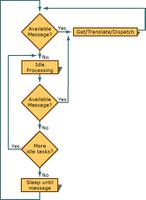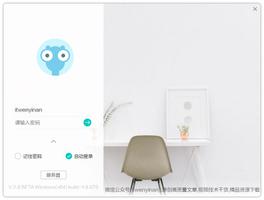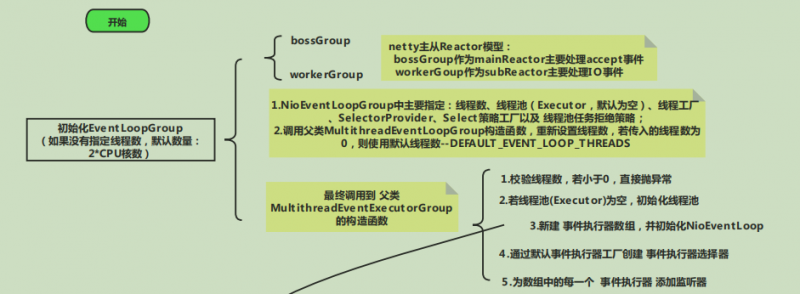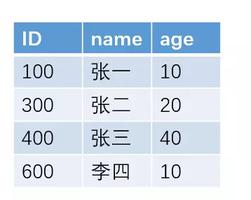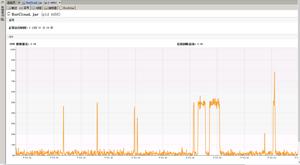netty总结服务端启动流程

给自己做个总结(连接服务端初始化以及处理):
1. NioEventLoop 用来正真处理io连接的
2.NioEventLoopGroup 可以简单的理解为处理组一共两个,一个是接受连接的,一个是处理连接的,里面的chooser即是NioEventLoop数组
服务端初始化流程
入口
ChannelFuture f = b.bind(8888).sync();
public ChannelFuture bind(int inetPort) { return this.bind(new InetSocketAddress(inetPort));
}
public ChannelFuture bind(SocketAddress localAddress) {
this.validate();
if (localAddress == null) {
throw new NullPointerException("localAddress");
} else {
return this.doBind(localAddress);
}
}
private ChannelFuture doBind(final SocketAddress localAddress) {
//初始化即注册
final ChannelFuture regFuture = this.initAndRegister();
final Channel channel = regFuture.channel();
if (regFuture.cause() != null) {
return regFuture;
} else if (regFuture.isDone()) {
ChannelPromise promise = channel.newPromise();
//绑定
doBind0(regFuture, channel, localAddress, promise);
return promise;
} else {
final AbstractBootstrap.PendingRegistrationPromise promise = new AbstractBootstrap.PendingRegistrationPromise(channel);
regFuture.addListener(new ChannelFutureListener() {
public void operationComplete(ChannelFuture future) throws Exception {
Throwable cause = future.cause();
if (cause != null) {
promise.setFailure(cause);
} else {
promise.registered();
AbstractBootstrap.doBind0(regFuture, channel, localAddress, promise);
}
}
});
return promise;
}
}
先说注册以及初始化
final ChannelFuture initAndRegister() {
Channel channel = null;
try {
//这里的channelFactory是启动代码的 b.channel(NioServerSocketChannel.class)传的通过反射实例化的对象
channel = this.channelFactory.newChannel();
//初始化
this.init(channel);
} catch (Throwable var3) {
if (channel != null) {
channel.unsafe().closeForcibly();
return (new DefaultChannelPromise(channel, GlobalEventExecutor.INSTANCE)).setFailure(var3);
}
return (new DefaultChannelPromise(new FailedChannel(), GlobalEventExecutor.INSTANCE)).setFailure(var3);
}
//注册selector
ChannelFuture regFuture = this.config().group().register(channel);
if (regFuture.cause() != null) {
if (channel.isRegistered()) {
channel.close();
} else {
channel.unsafe().closeForcibly();
}
}
return regFuture;
}
//设置ChannelOptions ChannelAttrs 配置服务端Channel的相关属性
//设置ChildOptions ChildAttrs 配置每个新连接的Channel的相关属性
//Config handler 配置服务端pipeline
//add ServerBootstrapAcceptor 添加连接器,对accpet接受到的新连接进行处理,添加一个nio线程
void init(Channel channel) throws Exception {
Map<ChannelOption<?>, Object> options = this.options0();
synchronized(options) {
setChannelOptions(channel, options, logger);
}
Map<AttributeKey<?>, Object> attrs = this.attrs0();
synchronized(attrs) {
Iterator var5 = attrs.entrySet().iterator();
while(true) {
if (!var5.hasNext()) {
break;
}
Entry<AttributeKey<?>, Object> e = (Entry)var5.next();
AttributeKey<Object> key = (AttributeKey)e.getKey();
channel.attr(key).set(e.getValue());
}
}
ChannelPipeline p = channel.pipeline();
final EventLoopGroup currentChildGroup = this.childGroup;
final ChannelHandler currentChildHandler = this.childHandler;
Map var9 = this.childOptions;
final Entry[] currentChildOptions;
synchronized(this.childOptions) {
currentChildOptions = (Entry[])this.childOptions.entrySet().toArray(newOptionArray(this.childOptions.size()));
}
var9 = this.childAttrs;
final Entry[] currentChildAttrs;
synchronized(this.childAttrs) {
currentChildAttrs = (Entry[])this.childAttrs.entrySet().toArray(newAttrArray(this.childAttrs.size()));
}
p.addLast(new ChannelHandler[]{new ChannelInitializer<Channel>() {
public void initChannel(final Channel ch) throws Exception {
final ChannelPipeline pipeline = ch.pipeline();
ChannelHandler handler = ServerBootstrap.this.config.handler();
if (handler != null) {
pipeline.addLast(new ChannelHandler[]{handler});
}
ch.eventLoop().execute(new Runnable() {
public void run() {
//这里是在有了新连接接入的时候生成处理NioEventLoop的后续会讲到
pipeline.addLast(new ChannelHandler[]{new ServerBootstrap.ServerBootstrapAcceptor(ch, currentChildGroup, currentChildHandler, currentChildOptions, currentChildAttrs)});
}
});
}
}});
}
接下来注册selector
public ChannelFuture register(Channel channel) { return this.next().register(channel);
}
public EventLoop next() {
return (EventLoop)super.next();
}
public EventExecutor next() {
return this.chooser.next();
}
从上面的代码我们可以看到其实调用的 NioEventLoop(父类) 的register方法 SingleThreadEventLoop
public ChannelFuture register(Channel channel) { return this.register((ChannelPromise)(new DefaultChannelPromise(channel, this)));
}
public ChannelFuture register(ChannelPromise promise) {
ObjectUtil.checkNotNull(promise, "promise");
promise.channel().unsafe().register(this, promise);
return promise;
}
最终调用的是io.netty.channel.AbstractChannel.AbstractUnsafe
public final void register(EventLoop eventLoop, final ChannelPromise promise) { if (eventLoop == null) {
throw new NullPointerException("eventLoop");
} else if (AbstractChannel.this.isRegistered()) {
promise.setFailure(new IllegalStateException("registered to an event loop already"));
} else if (!AbstractChannel.this.isCompatible(eventLoop)) {
promise.setFailure(new IllegalStateException("incompatible event loop type: " + eventLoop.getClass().getName()));
} else {
//赋值 将NioEventLoop与channel绑定
AbstractChannel.this.eventLoop = eventLoop;
if (eventLoop.inEventLoop()) {
//注册流程
this.register0(promise);
} else {
try {
eventLoop.execute(new Runnable() {
public void run() {
AbstractUnsafe.this.register0(promise);
}
});
} catch (Throwable var4) {
AbstractChannel.logger.warn("Force-closing a channel whose registration task was not accepted by an event loop: {}", AbstractChannel.this, var4);
this.closeForcibly();
AbstractChannel.this.closeFuture.setClosed();
this.safeSetFailure(promise, var4);
}
}
}
}
private void register0(ChannelPromise promise) {
try {
if (!promise.setUncancellable() || !this.ensureOpen(promise)) {
return;
}
boolean firstRegistration = this.neverRegistered;
//这里
AbstractChannel.this.doRegister();
this.neverRegistered = false;
AbstractChannel.this.registered = true;
//执行这个方法的原因是 当pipeline调用的时候,如果该 pipeline 还没有注册到这个 eventLoop 上,则将这个包装过 handler 的 context 放进变量 pendingHandlerCallbackHead 中,然后在此执行
AbstractChannel.this.pipeline.invokeHandlerAddedIfNeeded();
this.safeSetSuccess(promise);
AbstractChannel.this.pipeline.fireChannelRegistered();
if (AbstractChannel.this.isActive()) {
if (firstRegistration) {
AbstractChannel.this.pipeline.fireChannelActive();
} else if (AbstractChannel.this.config().isAutoRead()) {
this.beginRead();
}
}
} catch (Throwable var3) {
this.closeForcibly();
AbstractChannel.this.closeFuture.setClosed();
this.safeSetFailure(promise, var3);
}
}
protected void doRegister() throws Exception {
boolean selected = false;
for (;;) {
try {
//把channel注册到eventLoop上的selector上 jdk
selectionKey = javaChannel().register(eventLoop().unwrappedSelector(), 0, this);
return;
} catch (CancelledKeyException e) {
if (!selected) {
// Force the Selector to select now as the "canceled" SelectionKey may still be
// cached and not removed because no Select.select(..) operation was called yet.
eventLoop().selectNow();
selected = true;
} else {
// We forced a select operation on the selector before but the SelectionKey is still cached
// for whatever reason. JDK bug ?
throw e;
}
}
}
}
开始绑定
这时候服务端处理的NioEventLoop就已经在运行了 channel.eventLoop().execute()就已经触发了run方法
private static void doBind0(final ChannelFuture regFuture, final Channel channel, final SocketAddress localAddress, final ChannelPromise promise) { channel.eventLoop().execute(new Runnable() {
public void run() {
if (regFuture.isSuccess()) {
channel.bind(localAddress, promise).addListener(ChannelFutureListener.CLOSE_ON_FAILURE);
} else {
promise.setFailure(regFuture.cause());
}
}
});
}
public void execute(Runnable task) {
if (task == null) {
throw new NullPointerException("task");
} else {
boolean inEventLoop = this.inEventLoop();
if (inEventLoop) {
this.addTask(task);
} else {
//新起一个线程
this.startThread();
this.addTask(task);
if (this.isShutdown() && this.removeTask(task)) {
reject();
}
}
if (!this.addTaskWakesUp && this.wakesUpForTask(task)) {
this.wakeup(inEventLoop);
}
}
}
private void startThread() {
if (this.state == 1 && STATE_UPDATER.compareAndSet(this, 1, 2)) {
try {
this.doStartThread();
} catch (Throwable var2) {
STATE_UPDATER.set(this, 1);
PlatformDependent.throwException(var2);
}
}
}
private void doStartThread() {
assert this.thread == null;
this.executor.execute(new Runnable() {
public void run() {
SingleThreadEventExecutor.this.thread = Thread.currentThread();
if (SingleThreadEventExecutor.this.interrupted) {
SingleThreadEventExecutor.this.thread.interrupt();
}
boolean success = false;
SingleThreadEventExecutor.this.updateLastExecutionTime();
boolean var112 = false;
int oldState;
label1685: {
try {
var112 = true;
//这步其实调用的就是NioEventLoop的run方法
SingleThreadEventExecutor.this.run();
success = true;
var112 = false;
break label1685;
} catch (Throwable var119) {
SingleThreadEventExecutor.logger.warn("Unexpected exception from an event executor: ", var119);
var112 = false;
} finally {
if (var112) {
int oldStatex;
do {
oldStatex = SingleThreadEventExecutor.this.state;
} while(oldStatex < 3 && !SingleThreadEventExecutor.STATE_UPDATER.compareAndSet(SingleThreadEventExecutor.this, oldStatex, 3));
if (success && SingleThreadEventExecutor.this.gracefulShutdownStartTime == 0L) {
SingleThreadEventExecutor.logger.error("Buggy " + EventExecutor.class.getSimpleName() + " implementation; " + SingleThreadEventExecutor.class.getSimpleName() + ".confirmShutdown() must be called before run() implementation terminates.");
}
try {
while(!SingleThreadEventExecutor.this.confirmShutdown()) {
;
}
} finally {
try {
SingleThreadEventExecutor.this.cleanup();
} finally {
SingleThreadEventExecutor.STATE_UPDATER.set(SingleThreadEventExecutor.this, 5);
SingleThreadEventExecutor.this.threadLock.release();
if (!SingleThreadEventExecutor.this.taskQueue.isEmpty()) {
SingleThreadEventExecutor.logger.warn("An event executor terminated with non-empty task queue (" + SingleThreadEventExecutor.this.taskQueue.size() + ")");
}
SingleThreadEventExecutor.this.terminationFuture.setSuccess((Object)null);
}
}
}
}
do {
oldState = SingleThreadEventExecutor.this.state;
} while(oldState < 3 && !SingleThreadEventExecutor.STATE_UPDATER.compareAndSet(SingleThreadEventExecutor.this, oldState, 3));
if (success && SingleThreadEventExecutor.this.gracefulShutdownStartTime == 0L) {
SingleThreadEventExecutor.logger.error("Buggy " + EventExecutor.class.getSimpleName() + " implementation; " + SingleThreadEventExecutor.class.getSimpleName() + ".confirmShutdown() must be called before run() implementation terminates.");
}
try {
while(!SingleThreadEventExecutor.this.confirmShutdown()) {
;
}
return;
} finally {
try {
SingleThreadEventExecutor.this.cleanup();
} finally {
SingleThreadEventExecutor.STATE_UPDATER.set(SingleThreadEventExecutor.this, 5);
SingleThreadEventExecutor.this.threadLock.release();
if (!SingleThreadEventExecutor.this.taskQueue.isEmpty()) {
SingleThreadEventExecutor.logger.warn("An event executor terminated with non-empty task queue (" + SingleThreadEventExecutor.this.taskQueue.size() + ")");
}
SingleThreadEventExecutor.this.terminationFuture.setSuccess((Object)null);
}
}
}
do {
oldState = SingleThreadEventExecutor.this.state;
} while(oldState < 3 && !SingleThreadEventExecutor.STATE_UPDATER.compareAndSet(SingleThreadEventExecutor.this, oldState, 3));
if (success && SingleThreadEventExecutor.this.gracefulShutdownStartTime == 0L) {
SingleThreadEventExecutor.logger.error("Buggy " + EventExecutor.class.getSimpleName() + " implementation; " + SingleThreadEventExecutor.class.getSimpleName() + ".confirmShutdown() must be called before run() implementation terminates.");
}
try {
while(!SingleThreadEventExecutor.this.confirmShutdown()) {
;
}
} finally {
try {
SingleThreadEventExecutor.this.cleanup();
} finally {
SingleThreadEventExecutor.STATE_UPDATER.set(SingleThreadEventExecutor.this, 5);
SingleThreadEventExecutor.this.threadLock.release();
if (!SingleThreadEventExecutor.this.taskQueue.isEmpty()) {
SingleThreadEventExecutor.logger.warn("An event executor terminated with non-empty task queue (" + SingleThreadEventExecutor.this.taskQueue.size() + ")");
}
SingleThreadEventExecutor.this.terminationFuture.setSuccess((Object)null);
}
}
}
});
}
继续看绑定
public ChannelFuture bind(SocketAddress localAddress, ChannelPromise promise) { return this.pipeline.bind(localAddress, promise);
}
接下来是内部的pipeline调用链
public final ChannelFuture bind(SocketAddress localAddress, ChannelPromise promise) { return this.tail.bind(localAddress, promise);
}
public ChannelFuture bind(final SocketAddress localAddress, final ChannelPromise promise) {
if (localAddress == null) {
throw new NullPointerException("localAddress");
} else if (this.isNotValidPromise(promise, false)) {
return promise;
} else {
final AbstractChannelHandlerContext next = this.findContextOutbound();
EventExecutor executor = next.executor();
if (executor.inEventLoop()) {
next.invokeBind(localAddress, promise);
} else {
safeExecute(executor, new Runnable() {
public void run() {
next.invokeBind(localAddress, promise);
}
}, promise, (Object)null);
}
return promise;
}
}
//最终调用的是heade的unsafe.bind
public void bind(ChannelHandlerContext ctx, SocketAddress localAddress, ChannelPromise promise) throws Exception {
this.unsafe.bind(localAddress, promise);
}
public final void bind(SocketAddress localAddress, ChannelPromise promise) {
this.assertEventLoop();
if (promise.setUncancellable() && this.ensureOpen(promise)) {
if (Boolean.TRUE.equals(AbstractChannel.this.config().getOption(ChannelOption.SO_BROADCAST)) && localAddress instanceof InetSocketAddress && !((InetSocketAddress)localAddress).getAddress().isAnyLocalAddress() && !PlatformDependent.isWindows() && !PlatformDependent.maybeSuperUser()) {
AbstractChannel.logger.warn("A non-root user can"t receive a broadcast packet if the socket is not bound to a wildcard address; binding to a non-wildcard address (" + localAddress + ") anyway as requested.");
}
boolean wasActive = AbstractChannel.this.isActive();
try {
AbstractChannel.this.doBind(localAddress);
} catch (Throwable var5) {
this.safeSetFailure(promise, var5);
this.closeIfClosed();
return;
}
if (!wasActive && AbstractChannel.this.isActive()) {
this.invokeLater(new Runnable() {
public void run() {
AbstractChannel.this.pipeline.fireChannelActive();
}
});
}
this.safeSetSuccess(promise);
}
}
//绑定
protected void doBind(SocketAddress localAddress) throws Exception {
if (PlatformDependent.javaVersion() >= 7) {
this.javaChannel().bind(localAddress, this.config.getBacklog());
} else {
this.javaChannel().socket().bind(localAddress, this.config.getBacklog());
}
}
public ChannelFuture bind(SocketAddress localAddress, ChannelPromise promise) {
return this.pipeline.bind(localAddress, promise);
}
public final ChannelFuture bind(SocketAddress localAddress, ChannelPromise promise) {
return this.tail.bind(localAddress, promise);
}
//HeadContext
public void bind(ChannelHandlerContext ctx, SocketAddress localAddress, ChannelPromise promise) throws Exception {
this.unsafe.bind(localAddress, promise);
}
public final void bind(SocketAddress localAddress, ChannelPromise promise) {
this.assertEventLoop();
if (promise.setUncancellable() && this.ensureOpen(promise)) {
if (Boolean.TRUE.equals(AbstractChannel.this.config().getOption(ChannelOption.SO_BROADCAST)) && localAddress instanceof InetSocketAddress && !((InetSocketAddress)localAddress).getAddress().isAnyLocalAddress() && !PlatformDependent.isWindows() && !PlatformDependent.maybeSuperUser()) {
AbstractChannel.logger.warn("A non-root user can"t receive a broadcast packet if the socket is not bound to a wildcard address; binding to a non-wildcard address (" + localAddress + ") anyway as requested.");
}
boolean wasActive = AbstractChannel.this.isActive();
try {
//jdk 绑定
AbstractChannel.this.doBind(localAddress);
} catch (Throwable var5) {
this.safeSetFailure(promise, var5);
this.closeIfClosed();
return;
}
if (!wasActive && AbstractChannel.this.isActive()) {
//注意 此时才是active 状态 执行下面的流程
this.invokeLater(new Runnable() {
public void run() {
AbstractChannel.this.pipeline.fireChannelActive();
}
});
}
this.safeSetSuccess(promise);
}
}
//调用jdk绑定端口
protected void doBind(SocketAddress localAddress) throws Exception {
if (PlatformDependent.javaVersion() >= 7) {
this.javaChannel().bind(localAddress, this.config.getBacklog());
} else {
this.javaChannel().socket().bind(localAddress, this.config.getBacklog());
}
}
后续处理
public final ChannelPipeline fireChannelActive() { AbstractChannelHandlerContext.invokeChannelActive(this.head);
return this;
}
//在head中 还会处理readIfIsAutoRead
public void channelActive(ChannelHandlerContext ctx) throws Exception {
ctx.fireChannelActive();
this.readIfIsAutoRead();
}
private void readIfIsAutoRead() {
if (DefaultChannelPipeline.this.channel.config().isAutoRead()) {
DefaultChannelPipeline.this.channel.read();
}
}
public Channel read() {
this.pipeline.read();
return this;
}
public final ChannelPipeline read() {
this.tail.read();
return this;
}
//最终还是到了head 中的unsafe方法 服务监控链接的NioEventLoop 的unsafe 是NioMessageUnsafe
public void read(ChannelHandlerContext ctx) {
this.unsafe.beginRead();
}
public final void beginRead() {
this.assertEventLoop();
if (AbstractChannel.this.isActive()) {
try {
AbstractChannel.this.doBeginRead();
} catch (final Exception var2) {
this.invokeLater(new Runnable() {
public void run() {
AbstractChannel.this.pipeline.fireExceptionCaught(var2);
}
});
this.close(this.voidPromise());
}
}
}
注册SelectionKey.OP_ACCEPT事件 至此 服务端启动完毕 NioEventLoop 也在运行中for(;;)
protected void doBeginRead() throws Exception { SelectionKey selectionKey = this.selectionKey;
if (selectionKey.isValid()) {
this.readPending = true;
int interestOps = selectionKey.interestOps();
if ((interestOps & this.readInterestOp) == 0) {
selectionKey.interestOps(interestOps | this.readInterestOp);
}
}
}
总结:初始化NioEventLoop 这是无限监听线程的封装 初始化channel 绑定NioEventLoop 绑定端口 注册 SelectionKey.OP_ACCEPT
新连接接入
入口
io.netty.channel.nio.NioEventLoop#run 无限循环监听 当有链接进入的时候调用链如下
protected void run() { while(true) {
while(true) {
try {
switch(this.selectStrategy.calculateStrategy(this.selectNowSupplier, this.hasTasks())) {
case -2:
continue;
case -1:
//select 操作
this.select(this.wakenUp.getAndSet(false));
if (this.wakenUp.get()) {
this.selector.wakeup();
}
default:
this.cancelledKeys = 0;
this.needsToSelectAgain = false;
int ioRatio = this.ioRatio;
if (ioRatio == 100) {
try {
//有链接的时候调用这个
this.processSelectedKeys();
} finally {
this.runAllTasks();
}
} else {
long ioStartTime = System.nanoTime();
boolean var13 = false;
try {
var13 = true;
this.processSelectedKeys();
var13 = false;
} finally {
if (var13) {
long ioTime = System.nanoTime() - ioStartTime;
this.runAllTasks(ioTime * (long)(100 - ioRatio) / (long)ioRatio);
}
}
long ioTime = System.nanoTime() - ioStartTime;
this.runAllTasks(ioTime * (long)(100 - ioRatio) / (long)ioRatio);
}
}
} catch (Throwable var21) {
handleLoopException(var21);
}
try {
if (this.isShuttingDown()) {
this.closeAll();
if (this.confirmShutdown()) {
return;
}
}
} catch (Throwable var18) {
handleLoopException(var18);
}
}
}
}
private void processSelectedKeys() {
if (this.selectedKeys != null) {
this.processSelectedKeysOptimized();
} else {
this.processSelectedKeysPlain(this.selector.selectedKeys());
}
}
private void processSelectedKeysOptimized() {
for(int i = 0; i < this.selectedKeys.size; ++i) {
SelectionKey k = this.selectedKeys.keys[i];
this.selectedKeys.keys[i] = null;
Object a = k.attachment();
if (a instanceof AbstractNioChannel) {
this.processSelectedKey(k, (AbstractNioChannel)a);
} else {
NioTask<SelectableChannel> task = (NioTask)a;
processSelectedKey(k, task);
}
if (this.needsToSelectAgain) {
this.selectedKeys.reset(i + 1);
this.selectAgain();
i = -1;
}
}
}
//这个方法
private void processSelectedKey(SelectionKey k, AbstractNioChannel ch) {
NioUnsafe unsafe = ch.unsafe();
if (!k.isValid()) {
NioEventLoop eventLoop;
try {
eventLoop = ch.eventLoop();
} catch (Throwable var6) {
return;
}
if (eventLoop == this && eventLoop != null) {
unsafe.close(unsafe.voidPromise());
}
} else {
try {
int readyOps = k.readyOps();
if ((readyOps & 8) != 0) {
int ops = k.interestOps();
ops &= -9;
k.interestOps(ops);
unsafe.finishConnect();
}
if ((readyOps & 4) != 0) {
ch.unsafe().forceFlush();
}
if ((readyOps & 17) != 0 || readyOps == 0) {
//其实最终调用的是这个方法
unsafe.read();
}
} catch (CancelledKeyException var7) {
unsafe.close(unsafe.voidPromise());
}
}
}
public void read() {
assert AbstractNioMessageChannel.this.eventLoop().inEventLoop();
ChannelConfig config = AbstractNioMessageChannel.this.config();
ChannelPipeline pipeline = AbstractNioMessageChannel.this.pipeline();
Handle allocHandle = AbstractNioMessageChannel.this.unsafe().recvBufAllocHandle();
allocHandle.reset(config);
boolean closed = false;
Throwable exception = null;
try {
int localRead;
try {
do {
localRead = AbstractNioMessageChannel.this.doReadMessages(this.readBuf);
if (localRead == 0) {
break;
}
if (localRead < 0) {
closed = true;
break;
}
allocHandle.incMessagesRead(localRead);
} while(allocHandle.continueReading());
} catch (Throwable var11) {
exception = var11;
}
localRead = this.readBuf.size();
for(int i = 0; i < localRead; ++i) {
AbstractNioMessageChannel.this.readPending = false;
//这块很关键 最终是一个 head->unsafe->ServerBootstrapAcceptor的调用链
pipeline.fireChannelRead(this.readBuf.get(i));
}
this.readBuf.clear();
allocHandle.readComplete();
pipeline.fireChannelReadComplete();
if (exception != null) {
closed = AbstractNioMessageChannel.this.closeOnReadError(exception);
pipeline.fireExceptionCaught(exception);
}
if (closed) {
AbstractNioMessageChannel.this.inputShutdown = true;
if (AbstractNioMessageChannel.this.isOpen()) {
this.close(this.voidPromise());
}
}
} finally {
if (!AbstractNioMessageChannel.this.readPending && !config.isAutoRead()) {
this.removeReadOp();
}
}
}
接受链接 accept add到buf list
protected int doReadMessages(List<Object> buf) throws Exception { SocketChannel ch = SocketUtils.accept(this.javaChannel());
try {
if (ch != null) {
//this 为服务端channel,即NioServerSocketChannel ch 为jdk创建的客户端channel ch 里面的 readInterestOp为SelectionKey.OP_READ
buf.add(new NioSocketChannel(this, ch));
return 1;
}
} catch (Throwable var6) {
logger.warn("Failed to create a new channel from an accepted socket.", var6);
try {
ch.close();
} catch (Throwable var5) {
logger.warn("Failed to close a socket.", var5);
}
}
ServerBootstrapAcceptor
public void channelRead(ChannelHandlerContext ctx, Object msg) {
final Channel child = (Channel) msg;
//添加业务handler
//流程如下 io.netty.channel.DefaultChannelPipeline#addLast(io.netty.channel.ChannelHandler...)
//io.netty.channel.DefaultChannelPipeline#addLast(io.netty.util.concurrent.EventExecutorGroup, io.netty.channel.ChannelHandler...)
//io.netty.channel.DefaultChannelPipeline#addLast(io.netty.util.concurrent.EventExecutorGroup, java.lang.String, io.netty.channel.ChannelHandler)
//io.netty.channel.DefaultChannelPipeline#callHandlerAdded0
//io.netty.channel.AbstractChannelHandlerContext#callHandlerAdded
// handler().handlerAdded(this); 业务加的自定义ChannelInitializer 里面的handlerAdded 方法其实就是调用initChannel方法 也就是我们加handle的常用方式
child.pipeline().addLast(childHandler);
setChannelOptions(child, childOptions, logger);
setAttributes(child, childAttrs);
try {
//register 过程与服务端监听的channel大致差不多
childGroup.register(child).addListener(new ChannelFutureListener() {
@Override
public void operationComplete(ChannelFuture future) throws Exception {
if (!future.isSuccess()) {
forceClose(child, future.cause());
}
}
});
} catch (Throwable t) {
forceClose(child, t);
}
}
//workerGroup
public ChannelFuture register(Channel channel) {
return this.next().register(channel);
}
public ChannelFuture register(Channel channel, ChannelPromise promise) {
if(channel == null) {
throw new NullPointerException("channel");
} else if(promise == null) {
throw new NullPointerException("promise");
} else {
//这里的unsafe是NioSocketChannel$NioSocketChannelUnsafe
channel.unsafe().register(this, promise);
return promise;
}
}
public final void register(EventLoop eventLoop, final ChannelPromise promise) {
if(eventLoop == null) {
throw new NullPointerException("eventLoop");
} else if(AbstractChannel.this.isRegistered()) {
promise.setFailure(new IllegalStateException("registered to an event loop already"));
} else if(!AbstractChannel.this.isCompatible(eventLoop)) {
promise.setFailure(new IllegalStateException("incompatible event loop type: " + eventLoop.getClass().getName()));
} else {
AbstractChannel.this.eventLoop = eventLoop;
// 开始真正的异步 此时线程是boss线程 而不是worder线程 会异步 同时启动NioEventLoop的run方法
if(eventLoop.inEventLoop()) {
this.register0(promise);
} else {
try {
eventLoop.execute(new OneTimeTask() {
public void run() {
AbstractUnsafe.this.register0(promise);
}
});
} catch (Throwable var4) {
AbstractChannel.logger.warn("Force-closing a channel whose registration task was not accepted by an event loop: {}", AbstractChannel.this, var4);
this.closeForcibly();
AbstractChannel.this.closeFuture.setClosed();
this.safeSetFailure(promise, var4);
}
}
}
}
//同上
private void register0(ChannelPromise promise) {
}
protected void doRegister() throws Exception {
boolean selected = false;
while(true) {
try {
this.selectionKey = this.javaChannel().register(this.eventLoop().selector, 0, this);
return;
} catch (CancelledKeyException var3) {
if(selected) {
throw var3;
}
this.eventLoop().selectNow();
selected = true;
}
}
}
public ChannelPipeline fireChannelActive() {
this.head.fireChannelActive();
if(this.channel.config().isAutoRead()) {
this.channel.read();
}
return this;
}
public ChannelHandlerContext read() {
final AbstractChannelHandlerContext next = this.findContextOutbound();
EventExecutor executor = next.executor();
if(executor.inEventLoop()) {
next.invokeRead();
} else {
Runnable task = next.invokeReadTask;
if(task == null) {
next.invokeReadTask = task = new Runnable() {
public void run() {
next.invokeRead();
}
};
}
executor.execute(task);
}
return this;
}
protected void doBeginRead() throws Exception {
if(!this.inputShutdown) {
SelectionKey selectionKey = this.selectionKey;
if(selectionKey.isValid()) {
this.readPending = true;
int interestOps = selectionKey.interestOps();
if((interestOps & this.readInterestOp) == 0) {
selectionKey.interestOps(interestOps | this.readInterestOp);
}
}
}
}
当客户端链接有读事件时,也会调用unsafe.read()方法 不过此时unsafe是NioByteUnsafe
public final void read() { final ChannelConfig config = config();
final ChannelPipeline pipeline = pipeline();
final ByteBufAllocator allocator = config.getAllocator();
final RecvByteBufAllocator.Handle allocHandle = recvBufAllocHandle();
allocHandle.reset(config);
ByteBuf byteBuf = null;
boolean close = false;
try {
do {
byteBuf = allocHandle.allocate(allocator);
allocHandle.lastBytesRead(doReadBytes(byteBuf));
if (allocHandle.lastBytesRead() <= 0) {
// nothing was read. release the buffer.
byteBuf.release();
byteBuf = null;
close = allocHandle.lastBytesRead() < 0;
break;
}
allocHandle.incMessagesRead(1);
readPending = false;
//这里 从而实现了处理数据的能力
pipeline.fireChannelRead(byteBuf);
byteBuf = null;
} while (allocHandle.continueReading());
allocHandle.readComplete();
pipeline.fireChannelReadComplete();
if (close) {
closeOnRead(pipeline);
}
} catch (Throwable t) {
handleReadException(pipeline, byteBuf, t, close, allocHandle);
} finally {
if (!readPending && !config.isAutoRead()) {
removeReadOp();
}
}
}
}
netty是在哪里检测到有新连接接入的?
boss线程执行的第一个过程,轮询出accpet事件,然后第二个过程通过jdk底层的accept方法,去创建这个连接
新连接时怎么注册到NioEventLoop线程的
简单来说,boss线程通过获取chooser的next()方法,拿到一个NioEventLoop。然后将新连接注册到这个NioEventLoop上的selector。
一个NioEventLoop对应一个selector
pipeline
在AbstractChannel初始化
入站事件
ChannelPipeline中的传播顺序为:head ——> ...... ——> tail。
出站事件
ChannelPipeline中各个ChannelHandler的执行顺序是:tail ——> ...... ——> head。
以上是 netty总结服务端启动流程 的全部内容, 来源链接: utcz.com/z/516509.html

